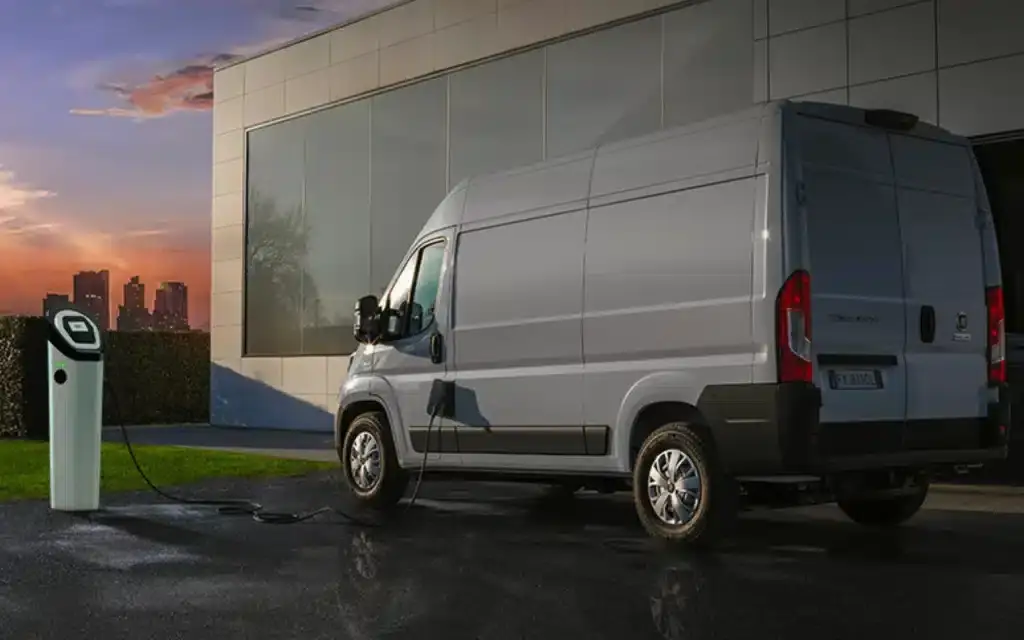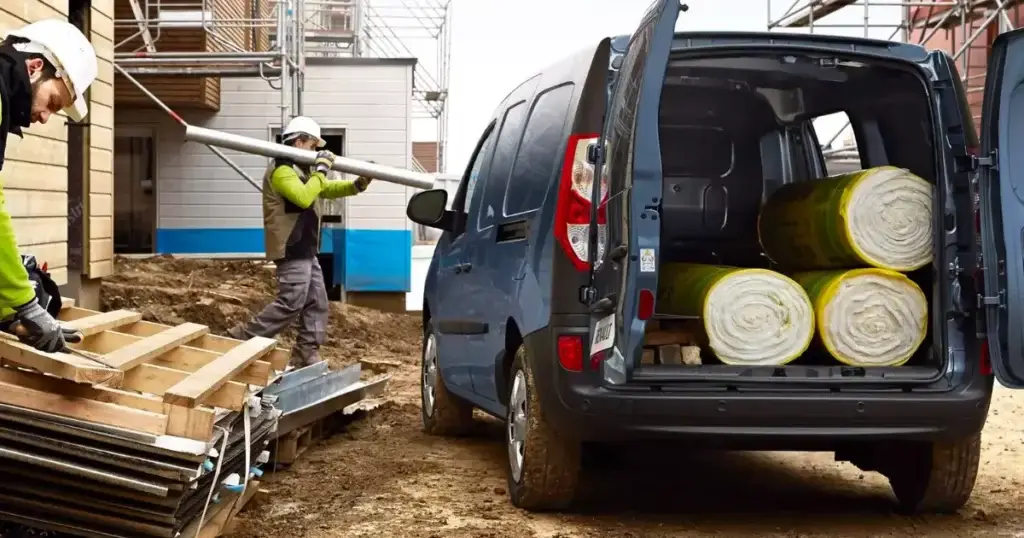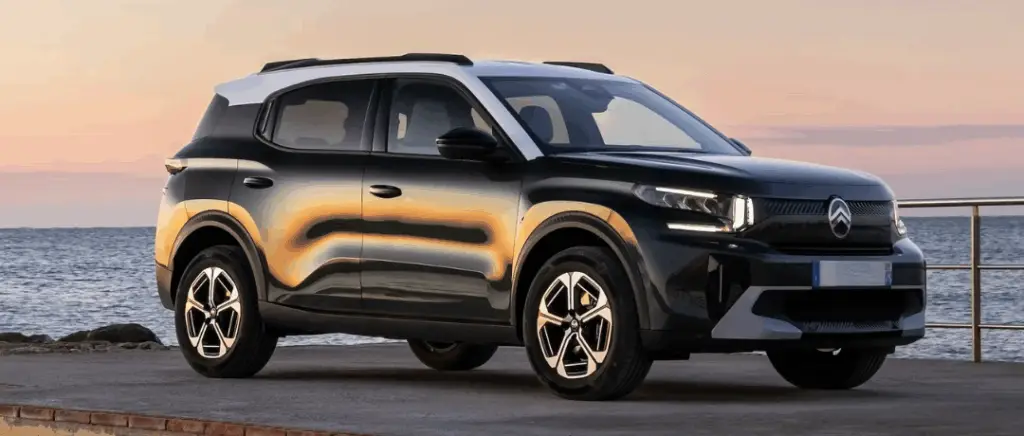What advantages do electric vans offer construction professionals?
For Nicolas, a building and civil engineering contractor based in the Hauts-de-France regionthe switch to electric vans quickly proved to be a profitable one. At the head of the company Weppes-TravauxThis choice has enabled him to divide his energy costs by three. An advantage that will help him to pay off his vehicle much more quickly than he imagined.
The electrical shift in the construction sector does not just concern independent craftsmen. The company Baudin Chateauneufa long-standing player in the public works sector, has launched an ambitious strategy of greening its vehicle fleetwhich has almost 700 vehicles. The company is aiming for a fleet of 100 % electric light vehicles by 2035. To achieve this objective, it is working closely with manufacturers, while relying on innovative tools: fleet management predictive maintenance and eco-driving monitoring. A comprehensive approach that combines economic performance with an eco-responsible approach, making it even more attractive to customers and partners.
These two examples testify to a change in mentality in the construction sector: electric mobility is no longer seen as a constraint, but as an opportunity. And the benefits don't stop there:
- Overall cost reduction : an electric van costs around three times less in energy than its internal combustion equivalent, with lower maintenance costs (fewer mechanical parts to replace, less frequent servicing).
- Lower emissions of CO₂ and fine particles : which limits the environmental impact of the worksite and improves health conditions for local residents and workers alike.
- Easier access to urban worksites: In the Low Emission Zones (ZFE), electric commercial vehicles benefit from greater freedom of movement. In France, the widespread introduction of LEZs was postponed by a vote in parliament on 28 May 2025, followed by the adoption of the bill to simplify economic life by the National Assembly. Nevertheless, the Crit'Air stickers still compulsory in major cities and are still used as restriction criteria in the event of pollution peaks. On a European scale, the trend is continuing: London, for example, already has the largest EPZ on the continent, with convincing results in terms of improving air quality.
Are electric vans suited to the constraints of construction sites?
Whether they are used to transport heavy materials and bulky tools, or for the daily journeys of workers, electric commercial vehicles are eagerly awaited. To meet the demands of construction sites, they need to combine robustness, load capacity and reliability. In addition, there are major environmental constraints: uneven terrain, parking difficulties in urban areas, frequent journeys between suppliers' depots and construction sites, etc.
Aware of these challenges, carmakers have developed ranges of electric light commercial vehicles (LCVs) to meet the needs of their customers. building and civil engineering professionals. Vans, converted vans: whatever the format and use you're looking for, there's a model to suit your business.
- Dimensions, load volume and GVW : Electric vans now offer the same loading capacity as combustion-powered models. They can easily transport the materials, scaffolding and tools that are essential on a building site.
- Design and customisation options : racks, shelving, modular storage units or reinforced floors can be integrated in the same way as on a conventional internal combustion van. The bodybuilders who partner with the manufacturers offer solutions tailored to each trade.
- Reliability and safety : Designed for intensive professional use, these vehicles incorporate advanced safety and driver assistance systems.
What autonomy for electric commercial vehicles used in the construction industry?
As a professional in the building and civil engineering sector, the autonomy of your electric commercial vehicles is undoubtedly one of your main concerns. Your vehicles need to be able to make a lot of daily journeys and get back and forth between warehouses and worksites.
Most electric vans have a range of up to from 150 to over 350 km depending on the capacity of the battery and the size of the vehicle. In practice, this range is sufficient to cover the daily needs of the vast majority of businesses.
Important information: The actual range of an electric van depends very much on the conditions in which it is used. The weight of the load, the type of route, the outside temperature and even the type of driving have a direct influence on consumption. In this context, monitoring tools that can track consumption in real time and optimise journeys are invaluable day-to-day allies.
What are the costs and purchase subsidies for electric worksite vans?

Investing in one or more electric vehicles represents a substantial budget for construction companies. Since December 2024, the rules have changed: the decree no. 2024-1084 has put an end to the national ecological bonus and the conversion premium for commercial vehicles. But this does not mean that the transition to electric vehicles has become unattainable.
There are also a number of tax levers that can make the deal more attractive in the long term. These include exemption from Company Vehicle Tax (TVS) and the exemption (total or partial, depending on the region) of the vehicle registration tax.
In addition, many local authorities continue to offer incentives to support businesses. These include the Greater Reims urban community, the Strasbourg Eurometropolis and the City of Paris, which offer direct grants for the purchase of electric Light Commercial Vehicles (LCVs). These local subsidies, combined with lower taxes, support construction professionals who are planning to make their fleets greener.
What charging points are available for electric vans on building sites?
Recharging is a strategic element for construction professionals who are switching to electric vehicles. The choice of a recharging infrastructure depends on three factors: the battery capacity of the vans, the charging power and the actual usage requirements (short daily journeys, long journeys, carrying heavy loads, etc.).
| Terminal power | Estimated recharge time | User profile | Recommended use |
|---|---|---|---|
| 7.4 kW (wall-mounted terminal) | 6 to 8 h | Self-employed craftsman, small SME | Daily use, recharging at night or between two days |
| 11 kW (wall-mounted/three-phase terminal) | 4 to 5 h | Small fleets (2-3 vehicles) | Rotation between sites, greater flexibility |
| 22 kW (fast terminal) | 2 to 3 hours | SMEs with several vehicles | Rapid availability on site or at the depot |
| 50 kW and over (ultra-fast terminal) | < 1 h | Large groups, specific intensive uses | Long journeys, urgent repairs, exceptional use (high investment) |
Average time based on an electric van consuming 21 kWh/100 km with a 50 kWh battery.
Please note! To guarantee the safety and conformity of your installations, it is essential to use an IRVE (Infrastructure de Recharge pour Véhicules Électriques) certified installer.
What models of electric utility vehicles are available for the construction sector?
The range of electric vans has expanded considerably in recent years. Models now cover all load capacities and all needs: from small vans for tradesmen to large vans capable of carrying heavy loads. Depending on the needs identified, some models will be better suited to frequent journeys in urban areas, while others will be more suitable for journeys over a longer distance. greater distance. The choice also depends on how quickly you want to recharge and the turnover rate of your employees.
Here is a comparative table of the main electric vans currently available:
| Model | Battery capacity | Range (WLTP) | Acceleration (0-100 km/h) | Fast charge (20-80%) |
|---|---|---|---|---|
| Fiat E-Ducato | 79 kWh | 283 km | - | 78 min |
| Fiat E-Scudo | 50 kWh | 220 km | 12.1 sec | 26 min |
| Mercedes eSprinter Van | 35 kWh | 153 km | 11 sec | 26 min |
| Citroën ë-Berlingo Van | 50 kWh | 275 km | 9.7 sec | 26 min |
| Peugeot e-Expert | 50 kWh | 230 km | 13.1 sec | 26 min |
| Opel Zafira-e Life 200 | - | 230 km | 12.1 sec | 26 min |
| Mercedes EQV 300 | - | 353 km | 12.1 sec | 41 min |
Can electric vans handle the loads and equipment used in the construction industry?
Electric light commercial vehicles are now designed to carry not only materials and tools, but also all the equipment needed to transform a van into a real mobile workshop. Partitions, non-slip floor protectors, walls or wheel arches help to preserve the condition and value of the vehicle. Modular storage units, workbenches, worktops, vices, bottle holders, reels, paper dispensers, rails and lashing straps, as well as a roof rack and ladder, all help to maximise the useful space. Some LCVs can even incorporate desks, steps and loading ramps to make it easier to handle heavy equipment.
While today's electric vans are perfectly capable of supporting most of the equipment and fittings required by construction and public works contractors, it is essential to calculate the payload correctly so that you don't exceed the legal limits (the Gross Vehicle Weight Rating is set at 3.5 tonnes) and keep driving safely.
What are the medium-term prospects for electric commercial vehicles on construction sites?
Several factors should contribute to the sustained development of these vehicles on construction sites:
- Increase in supply Electric LCVs: manufacturers such as Renault, Peugeot and Citroën are planning to launch new electric models, covering a wider range of sizes and capacities. Electric LCVs should therefore meet the needs of all professionals, from tradesmen to large companies.
- Improving batteries Electric vehicles: technological advances will increase vehicle range, reduce recharging time and optimise battery life. This will make electric commercial vehicles even more attractive for intensive use in the construction and public works sector.
- Infrastructure development The government and local authorities are investing in the deployment of charging stations, including in rural areas and at company depots. These facilities will make travel safer and facilitate the transition to electric vehicles.
At the same time, environmental and regulatory issues are becoming central for the construction and public works sector. Companies are increasingly being encouraged to reduce their carbon footprintemissions, with increasing obligations linked to CO₂ emissions and fine particles. The adoption of electric LCVs contributes directly to this objective of reducing polluting emissions.
Electric commercial vehicles are gradually establishing themselves as a credible mobility solution for the construction and public works sector. With energy savings, lower maintenance costs, easier access to urban areas and reduced environmental impact, these vehicles offer a host of advantages to tradesmen, SMEs and large companies alike.
In the medium term, the transition to electric commercial vehicles should accelerate, driven by ever more efficient models, extended-range batteries and charging points that are better distributed across the country.
For building and civil engineering professionals, adopting an electric vehicle is not just a sustainable choice: it's a strategy that combines competitiveness, safety and environmental responsibility.
You would like toto electric?
Beev offers multi-brand 100% electric vehicles at the best prices, as well as recharging solutions.
































